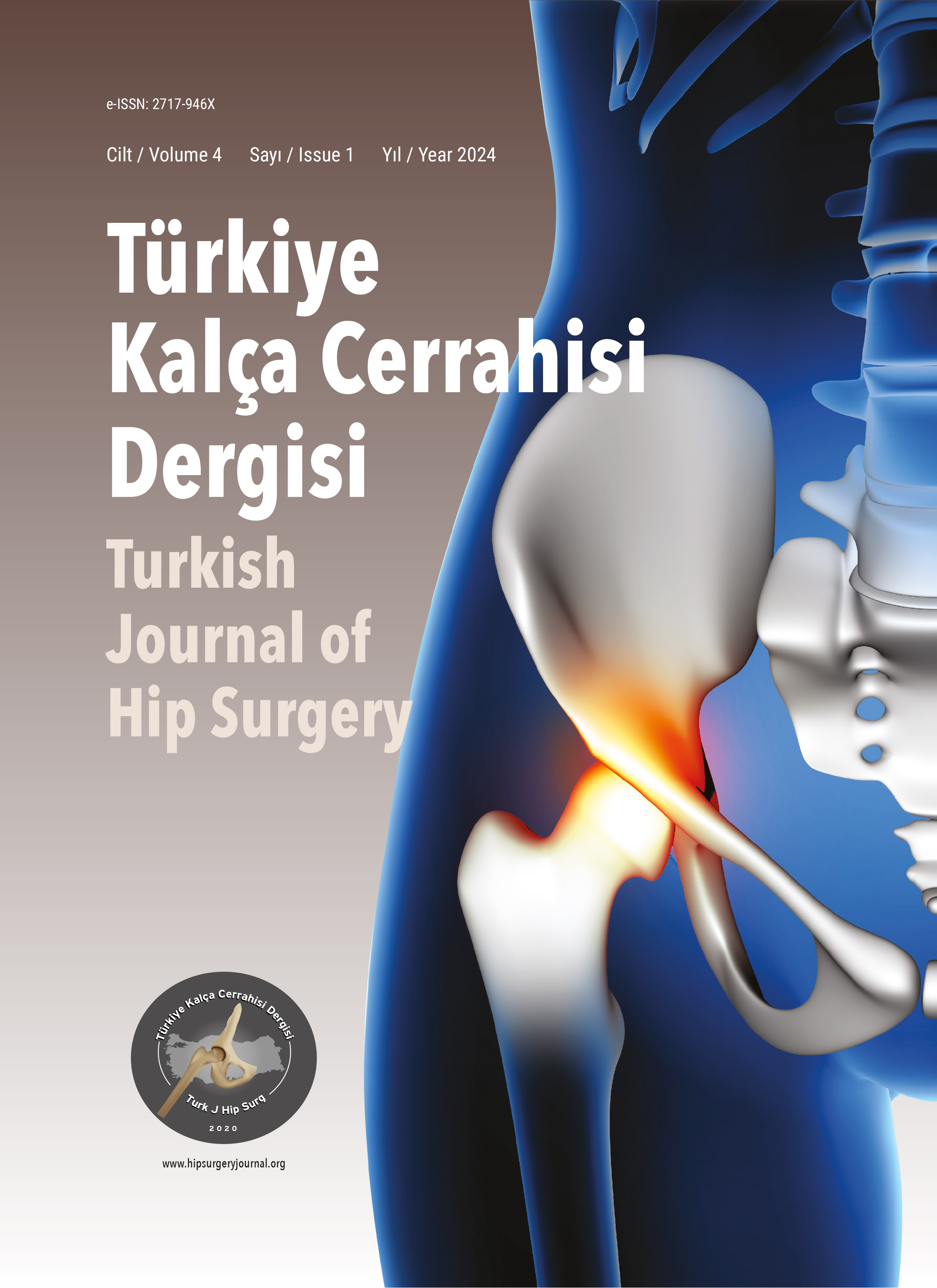e-ISSN: 2717-946X

Volume: 2 Issue: 2 - 2022
| 1. | Cover Page I |
| 2. | Editorial Board Pages II - IV |
| 3. | Contents Page V |
| 4. | Editorial Page VI |
| 5. | Manuscript Preparation Pages VII - IX |
| REVIEW ARTICLE | |
| 6. | The Biography of Prof. Dr. Orhan Süren (1931-28 June 2021): The founder of the Contemporary Conservative Traumatology in Turkey and Traumatology Section in İzmir Aegean University Mehmet Şerefettin Canda doi: 10.5505/TJHS.2022.66376 Pages 159 - 178 Prof. Dr. Orhan Süren is the founder of The Conservative Traumatology in Turkey. At the same time, he established the Traumatology Discipline (Section) of Ege University Medical Faculty Orthopedics and Traumatology Department in Izmir in 1971. Also, Prof. Dr. Orhan Süren is an intellectual and entrepreneurial scientist who grew up in İzmir. Our aim is to write the biography of Prof. Dr. Orhan Süren, who has served the people of Izmir throughout his life in the field of health, and to ensure that the public and younger generations know him. Prof. Dr. Orhan Süren was born in Menemen in 1931, graduated from Istanbul Faculty of Medicine in 1956, and later became a Pediatric Surgery and Orthopedics (Orthopedics and Traumatology) specialist in 1964, Associate Professor in 1974, and Professor in 1983 (1998), respectively. Prof. Dr. Orhan Süren, after becoming a specialist in Turkey, went abroad for 1.5 years (1965-1966) in the field of Orthopedics and Traumatology at the University of Giessen and then two years (1967-1969) on Contemporary Conservative Traumatology (by Böhlers method) in Austria has received an education. After Prof. Dr. Orhan Süren returned to Turkey, he held the following positions, respectively: first in SSK Bursa Hospital (1970), then at Aegean University Faculty of Medicine, Department of Pediatric Surgery (Chairman; Prof. Dr. İhsan Numanoğlu, 1971), and then worked at the EUTF Department of Orthopedics and Traumatology (Chairman; Prof. Dr. Merih Eroğlu, 1971-1983). During the period when he was out of academic life (1983-1998), Prof. Dr. Orhan Süren provided health services to the community in Izmir together with his wife, Prof. Dr. Türkan Süren, and were called state doctors by the people. Prof. Dr. Orhan Süren served as the President of the Izmir Medical Chamber for two terms (1986-1990). During this period, he worked with Prof. Dr. Veli Lök, who is known as a human rights defender, on the preparation of the Izmir Medical Chambers alternative medical report against torture and the Istanbul Protocol. He also established the Inönü University Hospital Emergency Service in 1998. Prof. Dr. Orhan Süren, who was promoted to Professor at Malatya Inönü University in 1998, later retired in the same year. Prof. Dr. Orhan Süren was elected as a member of the Izmir Konak Municipality Municipal Council (Major; Erdal İzgi) in the following period (1999-2004) and provided the establishment of the Konak Municipality Animal Hospital. Prof. Dr. Orhan Süren has made many scientific publications, mostly on Conservative Traumatology. Prof. Dr. Orhan Süren contributed to the training and education of many Orthopedics and Traumatology Specialists. Finally, he wrote a precious scientific book called My Professional Memories in Traumatology in 2012. Thus, it shed light on the developments in the field of Traumatology in Turkey and fulfilled a very important scientific task by sharing first-hand information about Böhlers Conservative Traumatology method. Prof. Dr. Orhan Süren and his beloved wife, Prof. Dr. Türkan Süren, are known as good medicine and democracy pioneers and have gained a respectable place in society. Prof. Dr. Orhan Süren was the founder of the Contemporary Conservative Traumatology at Ege University in Turkey and Izmir, and also served as the President of the Izmir Chamber of Medicine, and is an exemplary and intellectual scientist trained by Izmir. Unfortunately, this great son of humanity, raised by Izmir, Prof. Dr. Orhan Süren, passed away on June 27, 2021, in Izmir, leaving behind good memories and valuable works for Turkey. |
| 7. | Nuclear imaging in avascular necrosis of hip Nazlı Pınar Karahan Şen, Recep Bekiş doi: 10.5505/TJHS.2022.88598 Pages 179 - 183 Avascular necrosis of the hip is a condition that results in necrosis that leads to bone collapse as a result of decreased blood supply to the bone. In hip avascular necrosis, which usually progresses with pain and limitation of movement, the aim is to protect the femoral head. Therefore, it is important to establish the diagnosis before the collapse of the femoral head. Various imaging methods are needed to diagnose the disease. Bone scintigraphy is a noninvasive imaging method. It is very sensitive in demonstrating bone lesions and is frequently used in diagnosing avascular necrosis. In our article, the role of nuclear imaging methods in the diagnosis of avascular hip necrosis is discussed. |
| ORIGINAL RESEARCH | |
| 8. | Extent of head necrosis rather than demographic or etiologic variables, determines the frequency of collapse at avascular necrosis of femoral head Selahaddin Aydemir, Emre Acar, Cihangir Türemiş, Onur Hapa doi: 10.5505/TJHS.2022.69875 Pages 184 - 188 Bone marrow aspirate concentrate (BMA) enhances the efficacy of core decompression (CD) which is the most commonly used surgery in the early stages of osteonecrosis with variable results. The purpose of the present study was to compare collapsed (stage IV) and noncollapsed patients (n: 30) that have osteonecrosis of the femoral head, in terms of variables, extent or stage of the lesion, pain scores, smoking habit, steroid usage. Demographic variables (age, sex), follow-up time, preop VAS, postop VAS, satisfaction point, frequency of smoking, and steroid usage, FicatArlet stage were not different between collapsed (n: 24) and noncollapsed hips (n: 18) (p˃0.05). The only difference between the two groups was Kerbaul angle (p: 0.003), and necrotic index (p: 0.03), which were higher in collapsed patients (228±380 vs180±540, 38±13 Vs. 29±17). Collapse or progress of disease mainly depends on the extent of the disease rather than demographic or etiologic factors, while collapsed patients report similar degrees of pain or satisfaction compared to non-collapsed patients. |









